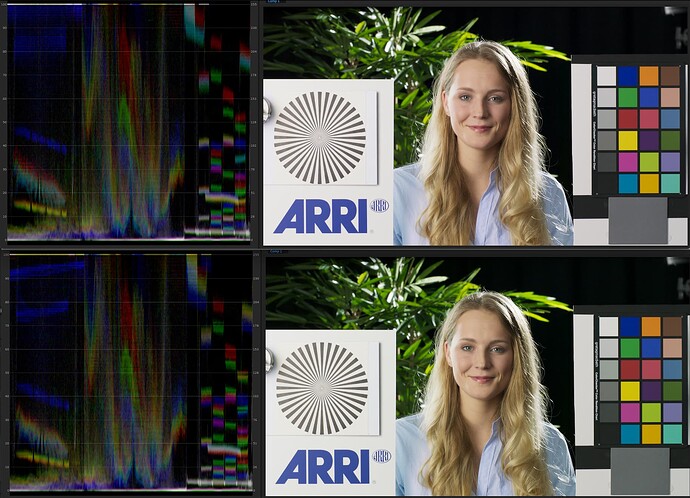I’ve been playing around with the now official OCIO integration in After Effects and pretty quickly bumped into two limitations or discrepancies.
-
The first issue I found was that when using the ACES Studio config in OCIO the inverse display space IDTs are missing, which makes it next to impossible to correctly interpret any sRGB, Rec709 or otherwise display referred footage. Even though I know we could argue if one should ever use these sources anyway, this feels like a pretty big deficiency in this config. On the forum I found previous mention of this issue, and the simple quick ‘n’ dirty fix seems to be to switch to the ACES 1.2 config in the OCIO control panel. At least that’s a workaround for some cases.
-
I noticed that LogC footage, when interpreted as ARRI - V3 LogC (EI800) - Wide Gamut will result in a slightly different image than when the regular ARRI IDT is applied in Resolve or Baselight. The contrast curve is visibly the same, but the skintones skew a bit more towards green in After Effects. Interestingly this isn’t the case with ARRI RAW footage, only with LogC encoded footage.
Steps I took in this test procedure:
- In Resolve, created a timeline that contained a ACES 2065-1 source (from the gamut compress test material), a Rec709 MacBeth chart and ARRI’s Isabella reference file as LogC ProRes. Each shot is on the timeline one at a time but also as a composited shot where the latter two images are PiP on top of the first image.
- Created a fake VFX pull of this timeline, converting everything to ACES 2065-1 exr’s with PIZ compression.
- Setup After Effects to work in ACES Studio config, imported my VFX pull and the three sources. Interpreted the source clips the right way (this is where I found out that the closest thing for the Rec709 MacBeth chart was the Rec709 Texture IDT which of course doesn’t result in a full inverse Rec709 → ACES).
- When comparing my VFX pull to the separate sources, the ACES 2065-1 source matched 100%, the Rec709 source was way off as expected and the Isabella reference image showed a green shift in After Effects.
- Switching the OCIO config to ACES 1.2 fixed the Rec709 issue, as the appropriate IDT is available in that config, but the Isabella reference showed the exact same shift.
- I rendered out what After Effects made of my sources to ACES 2065-1 and pulled that back into Resolve to verify that the same green shift was visible in Resolve.
- At this point I took a sidestep to Baselight to verify which of the other two setups was incorrect. Isabella rendered through Baselight in a full ACES pipeline matches the image that Resolve creates in ACES .
- All of the above leads me to think that there is something wrong with the implementation of the LogC3 IDT in After Effects or even in OCIO. Although I do hope that I am missing something and just made a mistake on my end.
Can someone verify that they’ve encountered the same issue, or does anybody have an idea of what I might be doing wrong?
Finally, I made some screen shots. In the below image you will see Baselight/Resolve’s rendering of Isabella on top and After Effects interpretation at the bottom.
These screenshots are from within After Effects, but the same shift can be seen when comparing the images in Baselight or Resolve.
